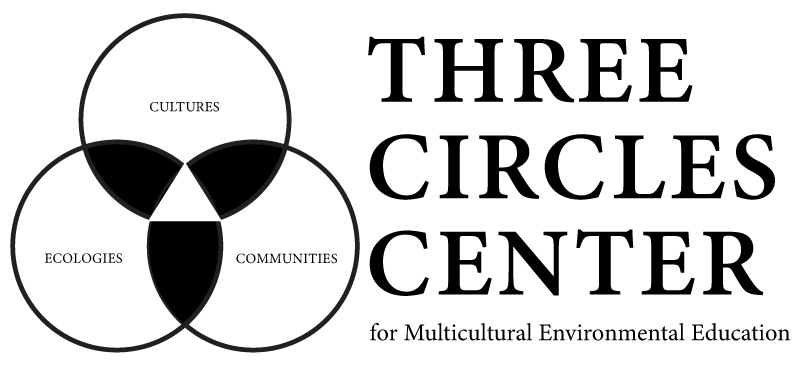
Source: World Guides
In Southern Africa, between the Republic of South Africa and Mozambique, lies the ‘Pearl of the African Oyster’, the Kingdom of Swaziland. Swaziland is ruled by His Majesty, King Mswati III. The monarchy is the epicenter of Swazi tradition and culture but also the seat of institutions of government. As Africa’s last remaining absolute monarchy, it often seems that Swaziland is one of the last ‘living’ remnants of Africa untouched by western influence and pedagogy. Culture, Community and Ecology—aspects of the holistic model of Multicultural Environmental Education recognized by Three Circles Center—are entwined inextricably at the core of Swazi life. These concepts permeate the courts, land ownership, lifestyle and celebration in modern day Swaziland in the same way as they did when the Nguni people first moved to this region in the 18th Century under the leadership of King Ngwane III. One example of this marriage is ‘Umhlanga’ – the reed dance.
Outside Looking In
Umhlanga is one of Swaziland’s pre-eminent cultural events. To the tourist eye, it seems a week’s long celebration of color, dance and song:
Little can prepare you for the sheer scale of the pageantry, with column upon column of girls advancing like vast ululating centipedes across the parade grounds of Ludzidzini, each dissolving in turn into the pulsating mass of bodies around the royal kraal. Up close, it’s an almost overwhelming immersion in noise and color, as the girls stamp, sing and sway in step, anklets rattling, naked flesh and dazzling costume blurring into a living, chanting kaleidoscope (Geo Group 2013).
The reed dance takes place annually, over eight days in the months of August and September and draws an excess of 20,000 maidens from every village in the Kingdom. The ceremonies begin with a gathering at the Queen Mother’s royal village. The Queen mother is mother to the reigning King, symbolized by a Lion or ingwenyama. She is symbolized by a female elephant (indlovukazi). At her residence, virgin girls dressed in Swazi attire will gather by village or age groups in preparation for their tribute labor to the Queen. For the next eight days, the girls will walk many miles with bush knives in hand, singing along the way, to cut and gather tall reeds from the river banks. These reeds are carried by the maidens, some competing to see who can cut the most reeds for her majesty, and returned to the Queen’s residence to be used for the repair of royal cattle kraals, windscreens and perimeter walls.

Swazi maidens dancing at Umhlanga – Reed Dance. Source: https://buhlebemaswati.wordpress.com/
Once the work is complete, the activities culminate in an awe inspiring parade where the girls have the opportunity to clean up and don their traditional attire (pictured above) for the parade. Often convening in sprawling fields near the royal residence, girls from various villages or age groups can take center stage in performances for the audience. The reed dance is a celebration of chastity, hard work and love for the Kingdom. Upon the insistence of international media propaganda, Umhlanga has been posited as an event where virgins dance before the King in preparation for his selection of a wife. Although polygamy is an accepted and practiced part of Swazi culture, this could not be further from the truth.
A National Strategic Framework – by design
Behind the cutting of reeds and celebration through song is an innate understanding of environmental patterns and natural resources management whose hereditary implementation has been passed on through tradition and culture. Between the months of August and September, when the Umhlanga takes place, the reeds are at the peak of their growth and dispersion. This expansion into numerous waterways across the Kingdom leads to indigenous ecological instability and a strain on local water supply. At some point, the invasive reeds would need to be cut back or managed by an entity similar to the United States Department of Agriculture (USDA) Forest Service. Although the average maiden participating in the reed dance may have no concept of ecosystem services, local authorities through Chiefs (village heads) and the monarchy are certainly aware of the plant’s nuisance and its alternative uses. This knowledge is not core curriculum in national schools nor the subject of elaborate government issued mandates. Rather, it is a manifestation of a centuries old relationship between Swazi people and the land; one that understands how to balance excess and scarcity. Asked about the implications of our Umhlanga story as an article in the journal for Three Circles, Swaziland’s only public interest environmental lawyer said, “for modern day conservation and environmental education there is a lesson that cannot be overlooked. The realization should be the fact that indigenous communities have always been in tune with their surroundings and their environment. Although they may not have called it ‘environmental regulation’, they certainly found a way to exist in harmony and balance with the earth”.
The reed dance is not the only example of ‘Three Circles’ manifest. I am confident that there are stories from across the globe, waiting to be discovered and shared, detailing the ways in which indigenous ‘scientists’ in unpronounceable regions of the earth’s corners are continuing to honor their place within the ‘Three Circles’. Our greatest responsibility and most indelible legacy will be to share this knowledge with the next generation.
Laura Stewart, MSL, was born and raised in Mbabane, the capital city of the Kingdom of Swaziland. After years spent in neighboring South Africa, she relocated to the U.S where she completed her master’s degree in Environmental Law at Lewis & Clark Law School in Portland, Oregon. Laura is currently an ORISE (Oak Ridge Institute for Science and Education) research participant at the U.S Environmental Protection Agency where she works on the research and development of community tools.
Copyright 2015 Laura Stewart

Comments are closed.